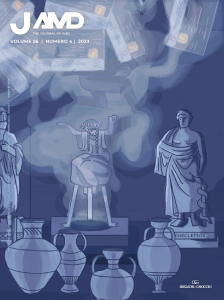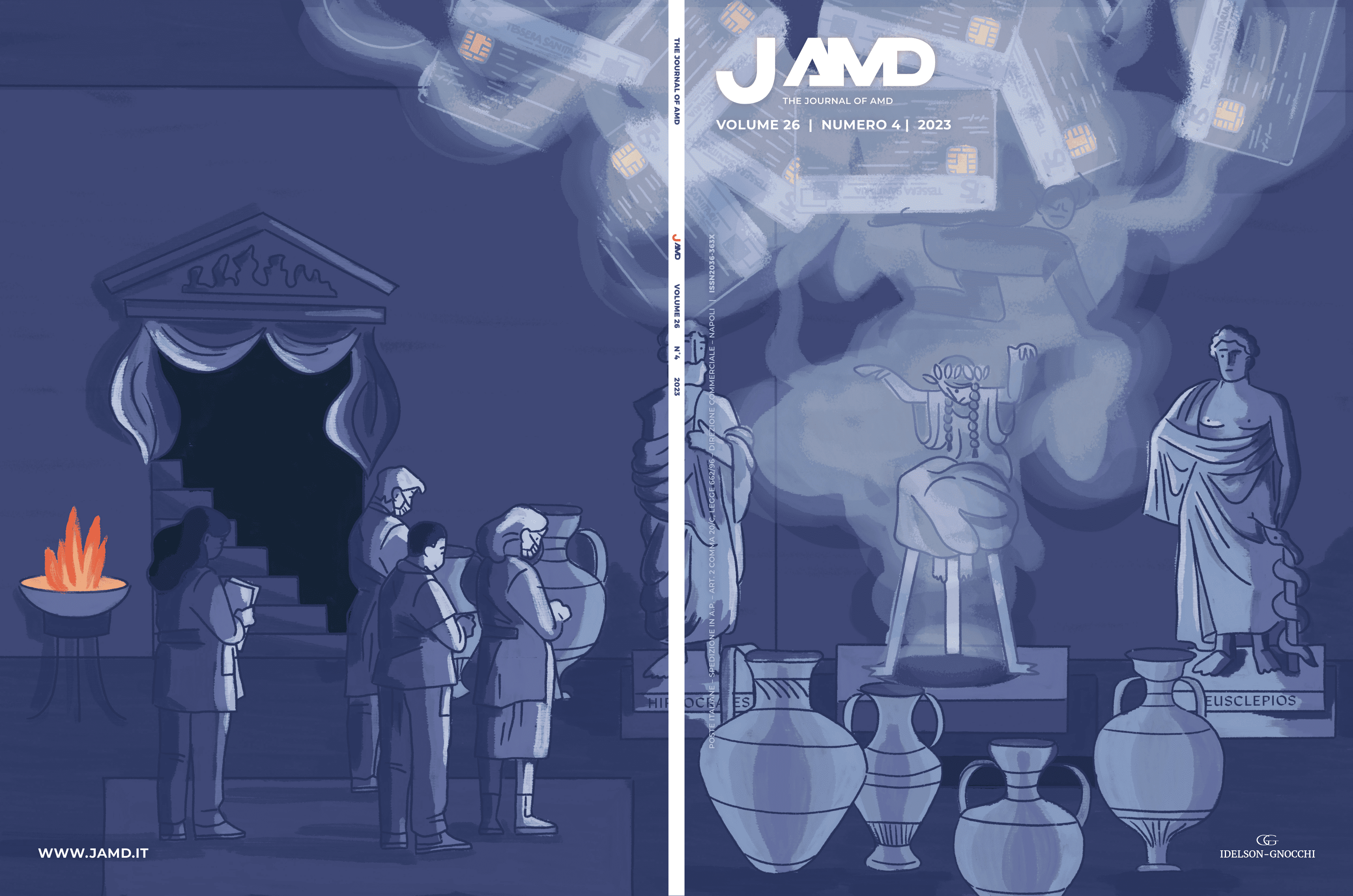Editorial
Delayed diagnosis, inadequate therapy, uncertain prognosis
JAMD 2023;26(4):235-236
Original articles
The health state of the National Health Service. Diagnosis, prognosis and therapy
JAMD 2023;26(4):237-246
The Italian National Health Service (NHS) is currently facing a severe crisis that is pushing it towards a healthcare, economic, and social disaster, particularly evident in various inland areas of the South. In practice, the core principles of universality, equality, and equity that underpin the NHS are being betrayed, leading to inevitable consequences that impact the daily lives of individuals. The current situation, exacerbated by the pandemic, exposes regional disparities, a shortage of healthcare personnel, and inefficiencies in care delivery. Most importantly, there is no indication of a progressive increase in public funding for healthcare. Public health spending in Italy remains below European and OECD averages, causing the country to deviate from international standards. A genuine “structural divide” is unfolding between the North and the South of the country, manifested in the distribution of medical and nursing staff as well as the implementation of new Essential Levels of Care (LEA) services. While the National Recovery and Resilience Plan (PNRR) presents an opportunity for the revival of the SSN, the current challenges in implementation raise concerns about indebting future generations to finance an expensive overhaul of the SSN. The GIMBE Foundation is proposing a Revitalization Plan to address the issues plaguing the SSN, consisting of 14 points that serve as a benchmark for continuously monitoring the political actions of the Government and Regions.
KEY WORDS national health service (NHS); public funding; regional disparities; healthcare personnel; essential levels of care; national recovery and resilience plan (PNRR); healthcare privatization.
Documento di consenso
Open questions on the role of basal insulin in the treatment of type 2 diabetes: a Delphi expert consensus
JAMD 2023;26(4):247-259
AIMS The revolution in the therapeutic approach to type 2 diabetes (T2D) requires a rethinking of the positioning of insulin therapy. Given the considerable number of open questions, a group of experts was convened with the aim of providing, through the Delphi method, practical guidance for doctors.
METHODS A group of 6 experts (Delphi board) developed a series of 29 statements on: the role of metabolic control in light of the most recent guidelines; basal insulin (BI) intensification strategies: 1) add-on vs. switch; 2) inertia in starting and titrating; 3) free vs. fixed ratio combination; basal-bolus intensification and de-intensification strategies; second generation analogues of BI (2BI). A panel of 31 diabetologists was therefore identified who, by accessing the dedicated website, assigned each statement a relevance score on a 9-point scale. The RAND/UCLA Appropriateness Method was adopted to assess the existence of disagreement among participants.
RESULTS For all 29 statements the panel members showed agreement. 26 statements were considered relevant, while one was considered not relevant and two were of uncertain relevance.
CONCLUSIONS The availability of new classes of drugs often allows the postponement of BI and the simplification of therapeutic schemes. It remains essential to promptly initiate and titrate insulin therapy when required. BI should always, unless contraindicated, be started in addition to, and not as a replacement, for ongoing treatments with cardiorenal benefits. 2BIs should be preferred due to their pharmacological profile, greater ease of self-titration and flexibility of administration.
KEY WORDS type 2 diabetes; expert consensus; basal insulin; therapeutic inertia.
Surveys
Awareness and role of the diabetologist in lipodystrophic syndromes: an AMD survey
JAMD 2023;26(4):260-266
Lipodystrophic syndromes are rare pathologies characterized by the more or less generalized absence of subcutaneous adipose tissue resulting in low circulating levels of leptin. They are characterized by some peculiar physical aspects such as: acanthosis nigricans, muscular hypertrophy, phlebomegaly, eruptive xanthomas, progeroid appearance, cushingoid appearance, acromegaloid appearance. Some clinical conditions are also commonly associated with lipodystrophic syndromes: diabetes mellitus with high insulin requirement (≥ 200 units/day or ≥ 2 units/kg/day), severe hypertriglyceridemia (≥ 500 mg/dL), hepatic steatosis. The importance of an early diagnosis and the presence of clinical metabolic alterations make the role of the diabetologist fundamental in recognizing cases and possibly treating them appropriately. In order to evaluate the level of knowledge of the diabetologists on the topic, a national survey was structured. The survey was completed by a total of 103 AMD Members. 27.2% of respondents declared they were familiar with lipodystrophic syndromes. Respondents to the survey declared that in most cases (68.0%) they followed a number of patients between 1 and 50 with clinical characteristics referable to lipodystrophic syndromes. In the majority of cases (47.6%) recombinant leptin was recognized as the best treatment. The survey highlights very clearly how there is a real desire among clinicians to be involved in education and training initiatives relating to the topic.
KEY WORDS lipodystrophic syndromes; leptin; diabetes mellitus.
Abstracts congresso AMD 2023
24° Congresso Nazionale AMD | Firenze 5-8 novembre 2023
Abstracts congresso AMD-SID 2023
29° Congresso Interassociativo AMD-SID Lombardia Coccaglio (BS) 20-21 ottobre 2023





